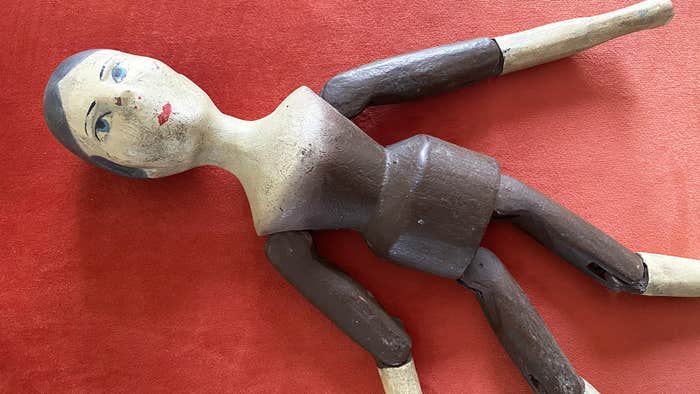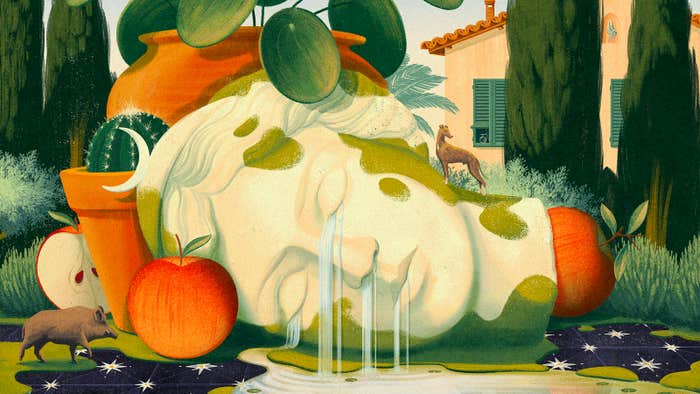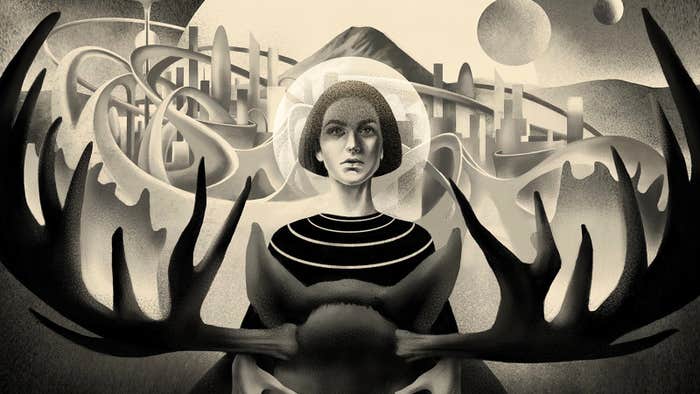
This article is part of series of Nautilus interviews with artists, you can read the rest here.
Artist Tim O’Brien has been a cultural force. Not only did he illustrate the covers for the popular Hunger Games novels, he also created the iconic series of Time Magazine covers depicting the scandals swirling around Donald Trump’s presidency. If you haven’t seen O’Brien’s art there, you’ve probably seen it in the pages of Nautilus—most recently in our Reality Issue. He recently sat down to answer our questions about his creative process, the inspiration he draws from science, and what’s wrong with using AI to create art.
How did you decide pursuing art was the path you wanted to take?
I was able to draw accurately as a child; all my life I could do this thing that not everyone could do. It seemed inevitable that I would eventually lean into this skill and learn in college how I might make a living as an illustrator.
You work in oil paints on a lot of projects with a quick turnaround time. Can you walk us through your process?
A job starts with a piece of paper and a pencil. I do rough sketches that sometimes only I can tell what they mean. When one seems right, I then take that sketch and develop it into a sketch I can share with an art director. This sketch is always done digitally, drawing directly on my Cintiq screen in photoshop. This digital beginning allows for multiple iterations, edits, color explorations, and finally, a solid image to take to final. Upon approval, I then work in oil on panel.
Oil paint is a wet medium but it is flexible and forgiving. When the painting is finished I photograph it wet, and send that file to clients. This all sounds like it takes a long time, but it’s a quick process, something I’ve been doing for many years now.
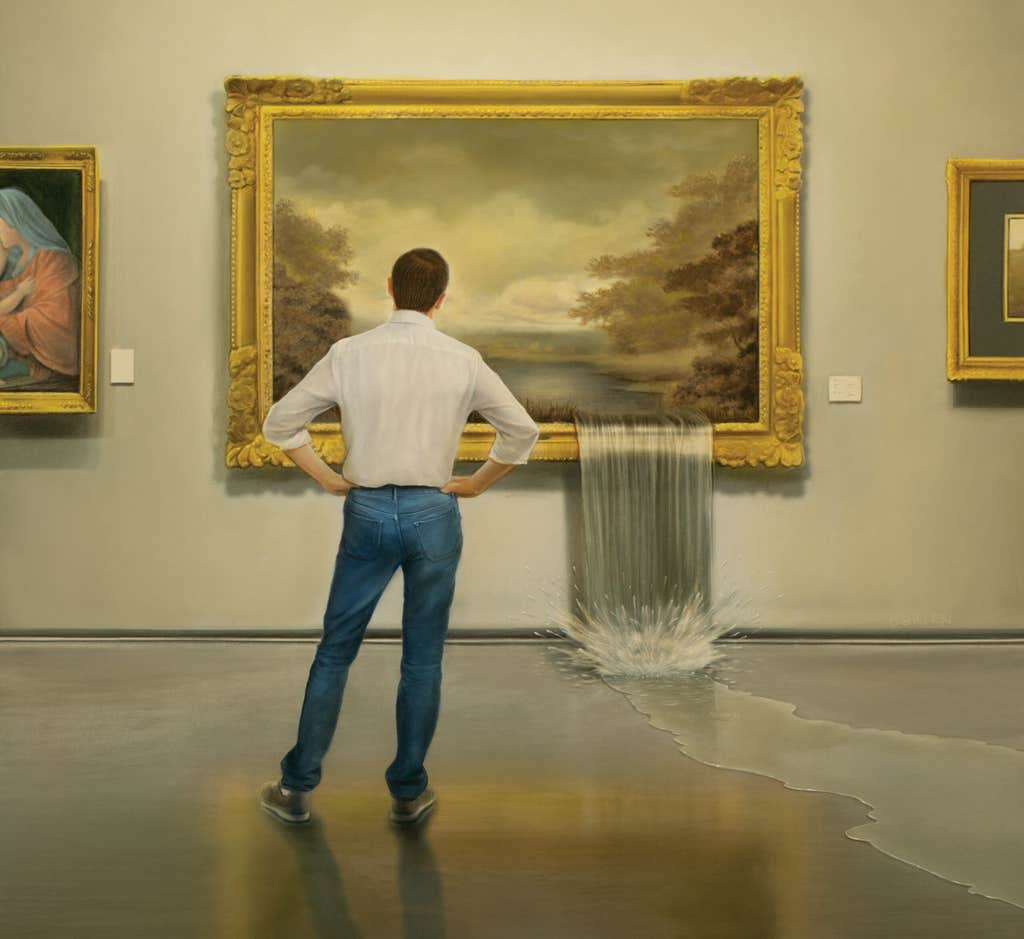
You created the cover for the Nautilus Reality Issue and a lot of your work dabbles in realism and surrealism. What attracts you to playing with reality in your work?
Realism is a hook. Everyone understands what is real, and taking things that people commonly understand and subverting it or changing it slightly can be a fun trick.
You also created two realistic depictions of the famous rabbit/duck optical illusion for the Nautilus story “How Your Brain Decides Without You.” How did you approach such a visually ambiguous subject?
That was a collaboration with then art director Len Small who suggested I try the old visual pun of the rabbit/duck. I knew of it so I just tried to do it realistically. The second option, of the reflection, was one that I thought of as an alternate.
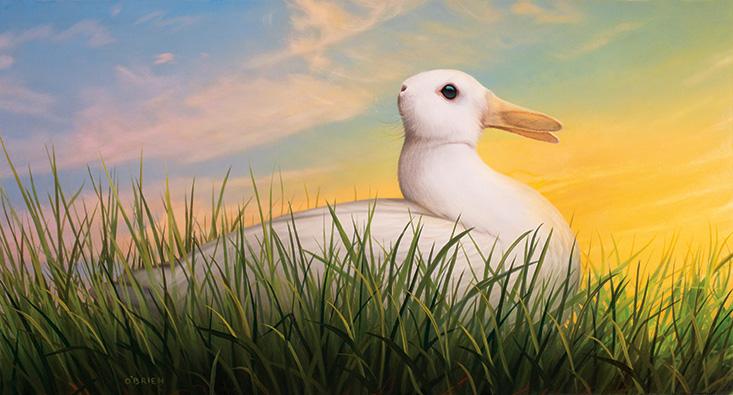
Is there anything in science that inspires you?
As a person who watches those I love deal with ailments all the time, any medical breakthrough—be it a vaccine that saves millions of lives or a new approach to stopping a tumor from growing—is the kind of science I hope and pray for.
You created the series of Time Magazine covers of Donald Trump behind the Resolute desk as a storm gathers and eventually floods the Oval Office. It’s the first time I remember seeing a series of Time Magazine covers with a narrative arc to them. How did that idea come about?
The creative director, D.W. Pine asked me to come up with the first image of Trump in a storm. I chose the desk, the pose, and the neutral face as the direction I hoped to go in. In subsequent versions, I pitched those as possible covers as the Trump administration was constantly in the middle of a crisis. The metaphor of the rising water was a perfect fit for the continual storm.

The rise of generative AI services like Midjourney is causing some controversy in the art world. What are your thoughts on the use of AI to create art?
I am against it on moral and legal grounds.
Generative AI output can only exist with the works of human artists. It has been trained mainly on stealing images and no human is compensated for that training. The power of copyright affords artists and authors the right to own their works for a limited time, to encourage the very creation of said work.
I am also against it as a tool that an artist uses. I am only interested in the work of human artists and for creativity and individuality to flourish, humans need to use their brains to solve their own visual problems and ideas.
As an artist who’s illustrated the covers of several novels, do you judge books by their covers?
I have created hundreds of book covers in my career, including all of the Hunger Games book covers. I’ve done wonderful covers on great books and mediocre books. All publishers hope that the cover sells the book, so yes, we do hope that great covers mean great books.
Has creating cover art changed the way you look at book covers at all?
I love looking at book covers and can walk through a bookstore for hours. So many amazing images and ideas to see and they’re all like little one-frame movies.
Interview by Jake Currie.
Lead image courtesy of Tim O’Brien.




























